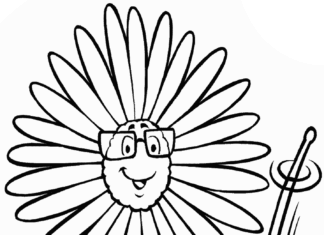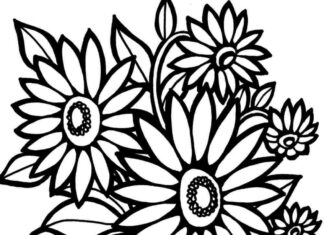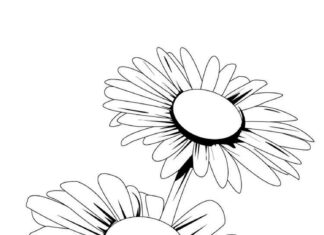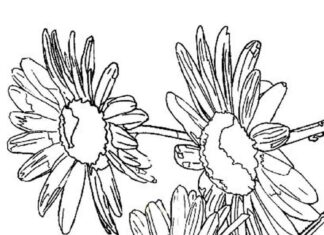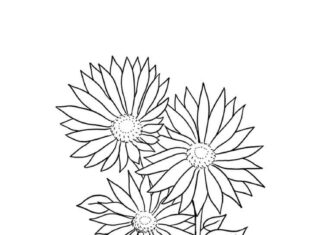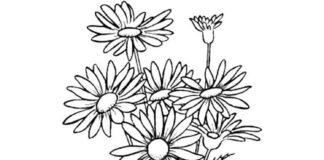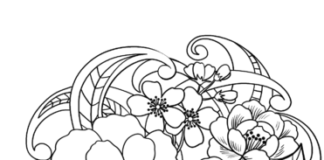Daisy (Bellis perennis) is a popular plant in the aster family. It is widely distributed in Europe, Asia and North America. It is characterized by small, white flowers with a yellow center and long, thin stems.
Daisy Coloring Book
information
- Botanical Description: Daisy is a perennial of small size, usually reaching 5-20 cm in height. It has long, thin stems from which single white flowers with distant petals grow, creating a distinctive appearance.
- Flowers: Daisy flowers consist of several layers of petals. The outer petals are white, and the inner petals have a yellow center. They usually bloom from spring to autumn, and their appearance attracts many pollinating insects.
- Leaves: Daisy leaves form a dense ground florets. They are oval or lanceolate, small in size, usually measuring about 2-5 cm in length. The leaves are green in color, and their edges may be slightly serrated.
- Posts: Daisy grows in lawns, pastures, roadsides and other open spaces. It is an opportunistic plant, able to adapt to different soil and climatic conditions.
- Application: Daisy is a popular ornamental plant, especially on lawns, where it forms a low carpet of white flowers. Its flowers are also edible and are sometimes used to decorate dishes or as a salad topping.
- Therapeutic Properties: Daisy has been used in folk medicine for medicinal purposes. Its leaves and flowers contain flavonoids, which can have anti-inflammatory and antioxidant effects. Daisy herb was used to relieve minor ailments.
- Symbolism: The daisy in many cultures symbolizes innocence, purity and delicacy. In some traditions, it is considered a symbol of love and love prophecies.
- Some Species Judged as a Weed: In some regions, daisy is treated as a weed because it can reproduce intensively and is capable of crowding out other plants.
- Proverbs: In some countries there are proverbs associated with daisies. For example, in some English-speaking countries, "picking petals off a daisy" is used for random decisions.
- Environmental Protection: Daisy is an important food source for bees and other pollinating insects, which is important for ecosystems. It is also a host plant for some butterflies.
trivia
- Perennial Plant: Daisy is a perennial plant, which means it can survive for many years, growing and blooming in successive seasons.
- Nighttime Behavior: Daisy flowers close at night and on cloudy days and during rain, protecting themselves from moisture loss or damage.
- Edibility: Both the flowers and leaves of the daisy are edible. The flowers are often used as a decoration in the kitchen and as an addition to salads. They have a slightly bitter taste.
- Flowers of Members of the Asteraceae Family: Daisy is a member of the Asteraceae family, meaning it is related to other popular flowers such as chrysanthemums, marguerites and sunflowers.
- Resistance to Krokidolite: Daisy is one of the few plants capable of surviving in soils contaminated with crocidolite, a type of asbestos.
- Daisy in Popular Medicine: In the past, daisy was used in folk medicine as an analgesic, anti-inflammatory and diuretic.
- Symbols of Many Countries: The daisy is a symbol of various countries, including Denmark, Estonia, Poland and Switzerland. In some of these countries, it is considered a symbol of innocence and hope.
- Variety of Flower Shapes: Daisy flowers can have different petal shapes, from longer and narrower to shorter and rounder, which adds to their charm and uniqueness.
- Colorful Variations: Although the predominant color of daisy flowers is white, there are also varieties with pink and red flowers.
- Lactose in Nectar: The nectar of daisy flowers contains lactose, which makes it an attractive food source for honey bees.

